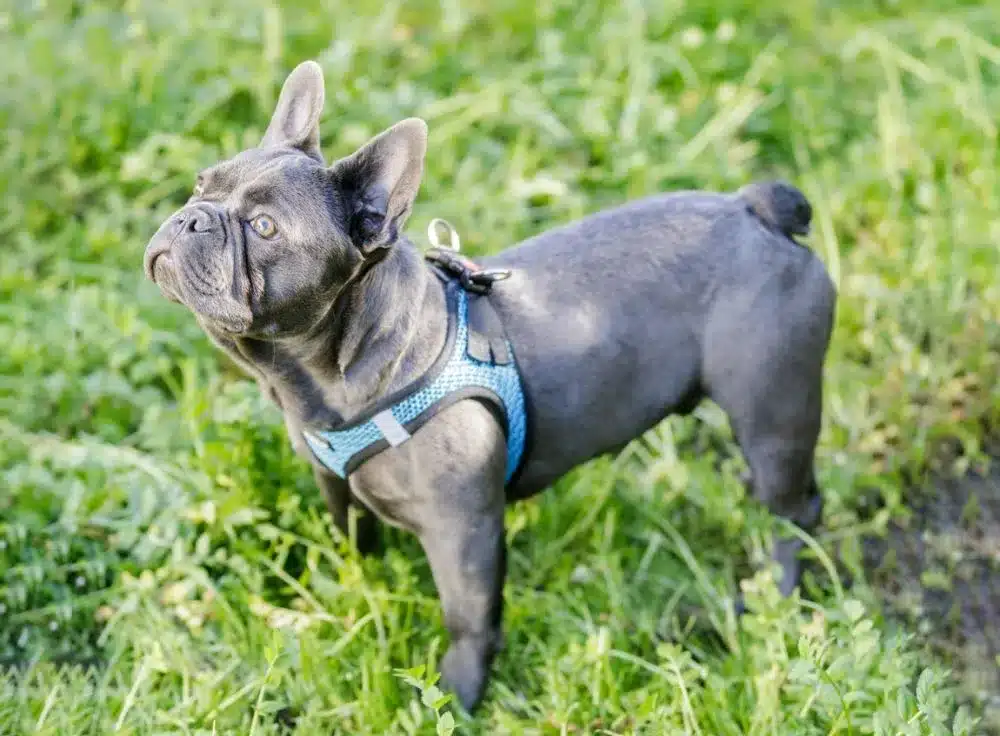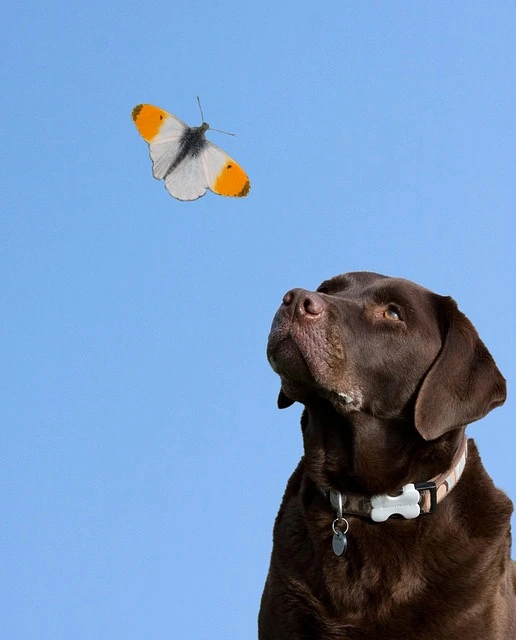Ever caught yourself staring at a Husky and thinking it escaped from a wildlife documentary? You’re not alone. Many dog lovers are drawn to dogs that look like wolves, captivated by their wild beauty and primal grace. These majestic breeds combine the untamed appearance of their ancient ancestors with the loyal heart of a devoted companion.
Table of Contents
Quick Answer
Dogs that look like wolves include breeds like Siberian Huskies, Alaskan Malamutes, German Shepherds, and Czechoslovakian Vlčáks. These breeds share physical traits with wolves such as pointed ears, thick coats, and similar facial structures. They’re perfect for experienced owners who want a striking companion with strong exercise needs and pack mentality.
TL;DR: Wolf-like dog breeds offer stunning wild appearance with domestic loyalty, but require experienced handling, extensive exercise, and proper socialization to thrive as family pets.
Why It Matters
Choosing a wolf-like breed isn’t just about aesthetics. These dogs often inherit strong pack instincts and high energy drives that can become problematic without proper guidance. Many end up in shelters because owners underestimate their needs.
Understanding these breeds helps you make an informed decision. Some have intense exercise requirements that rival working dogs. Others need firm leadership to prevent dominance issues. A few breeds are naturally aloof with strangers, requiring early socialization.
The good news? With the right preparation, these magnificent dogs become incredibly rewarding companions. They’re often intelligent, loyal, and form deep bonds with their families.
The Complete List: 12 Wolf-Like Dog Breeds
1. Siberian Husky
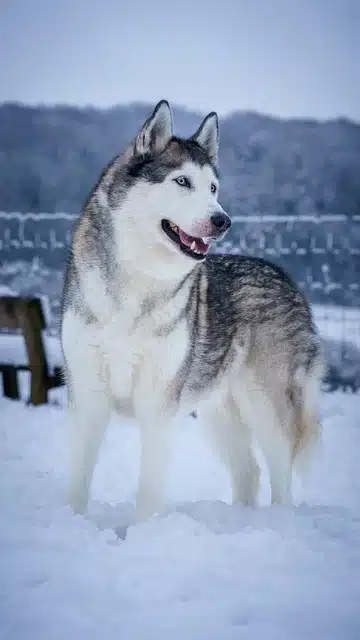
Origin: Siberia | Weight: 35-60 lbs | Energy: Very High.
The poster child of wolf-like breeds. Originally bred by the Chukchi people for endurance sledding. Piercing blue or multicolored eyes, erect triangular ears, and classic wolf-like facial markings. Known for escaping and howling. Requires 2-3+ hours daily exercise, often excelling in dog sledding or skijoring sports.
2. Alaskan Malamute
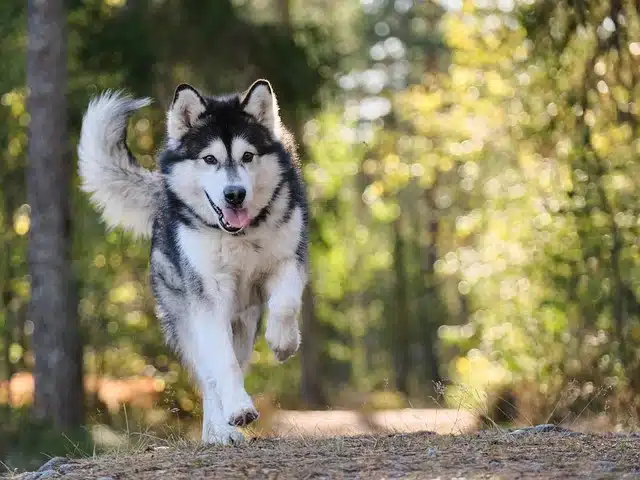
Origin: Alaska | Weight: 75-100 lbs | Energy: Very High.
Larger and more powerful than Huskies. Built for hauling heavy sleds over long distances. Dense double coat, curled tail, and bear-like face with wolf features. More independent than most breeds. Needs experienced handling and job-like exercise.
3. German Shepherd
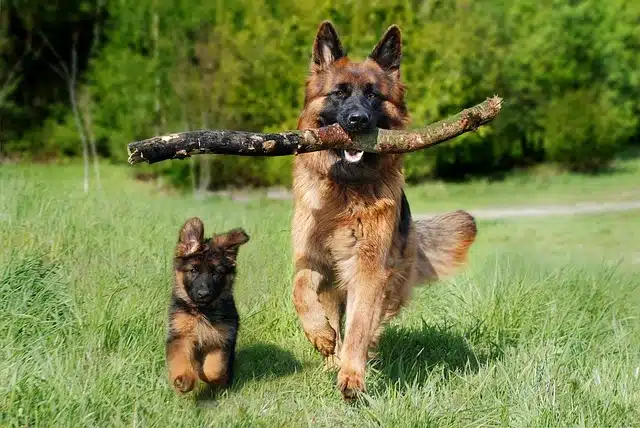
Origin: Germany | Weight: 50-90 lbs | Energy: High.
Versatile working breed with noble wolf-like appearance. Erect ears, elongated muzzle, and confident gait. Highly trainable and loyal. Originally developed for herding but excels in protection and service work. Requires mental stimulation and consistent leadership.
4. Czechoslovakian Vlčák
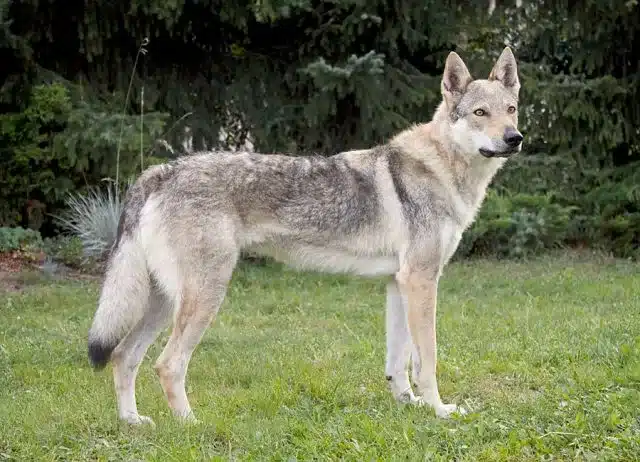
Origin: Czechoslovakia | Weight: 57-79 lbs | Energy: Very High.
Created by crossing German Shepherds with Carpathian wolves in the 1950s. Closest to actual wolves in this list. Amber eyes, erect ears, and wolf-like gait. Reserved with strangers, intensely loyal to family. Needs experienced owners only.
5. Tamaskan
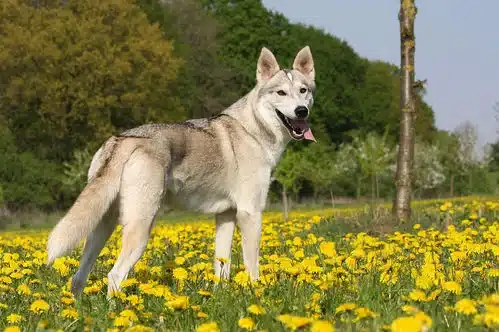
Origin: Finland | Weight: 55-88 lbs | Energy: Very High.
Deliberately bred to resemble wolves using Huskies, Malamutes, and German Shepherds. No actual wolf content. Straight tail, wolf-colored coat, and athletic build. Excellent family dogs with proper training. Still rare but growing in popularity.
6. Northern Inuit Dog
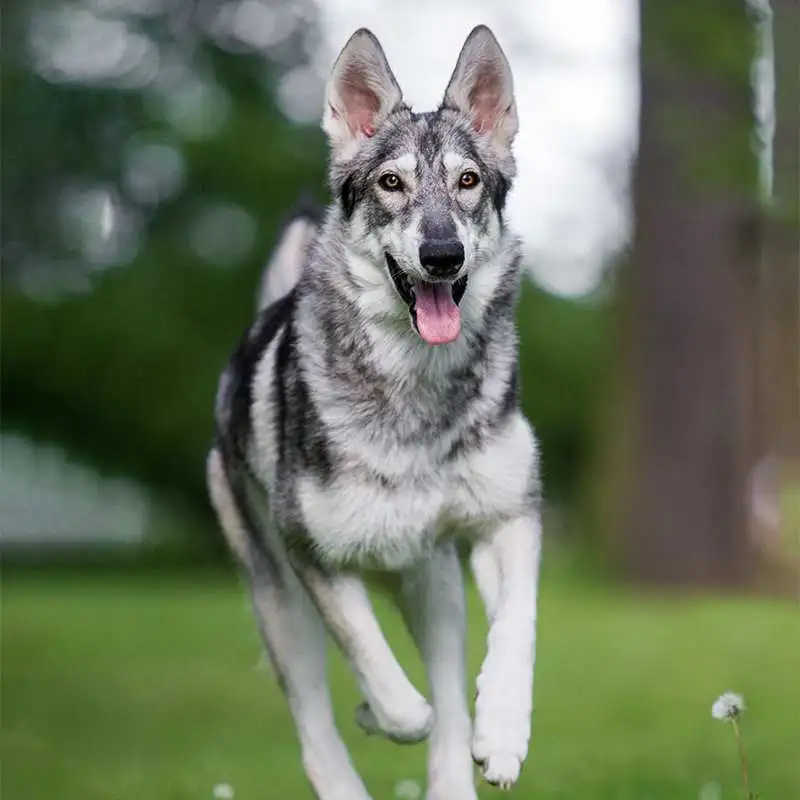
Origin: United Kingdom | Weight: 55-110 lbs | Energy: High.
Developed to create a wolf-like appearance without wolf genetics. Used in “Game of Thrones” as the Stark direwolves. Athletic build, thick coat, and gentle temperament. Good with children when properly socialized. Needs substantial daily exercise.
7. Saarloos Wolfdog
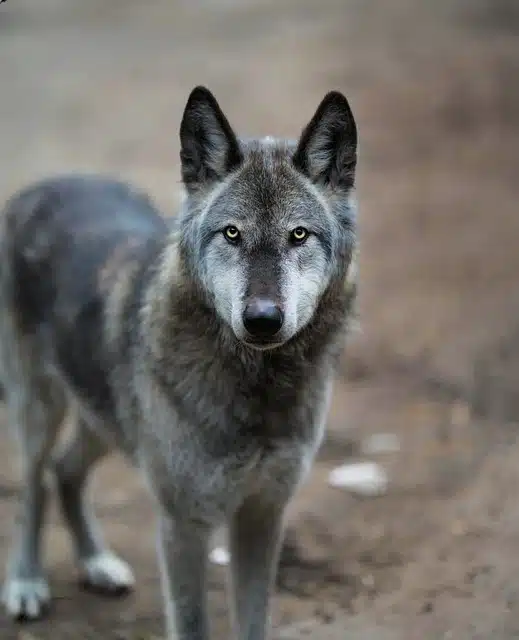
Origin: Netherlands | Weight: 79-90 lbs | Energy: Very High.
Created by crossing German Shepherds with European wolves. More reserved and cautious than typical dogs. Strong pack instincts and natural wariness of strangers. Requires experienced handling and extensive early socialization. Not suitable for first-time owners.
8. Shiloh Shepherd
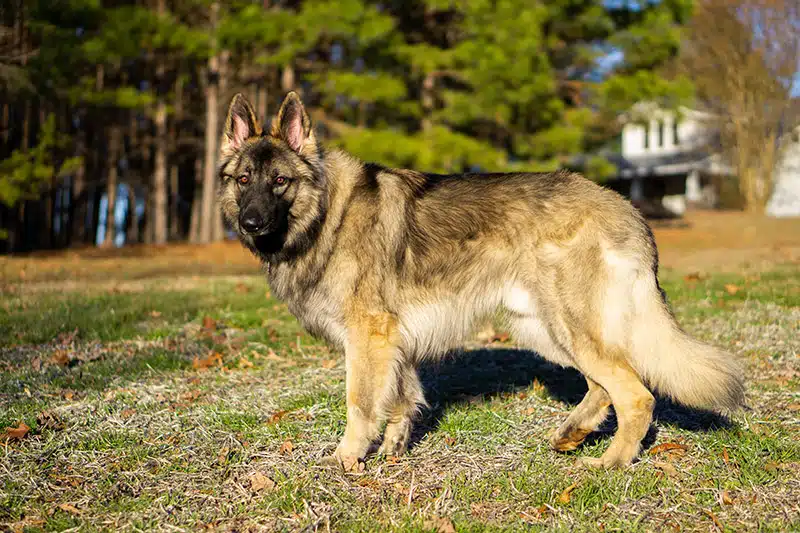
Origin: United States | Weight: 80-130 lbs | Energy: Moderate-High.
Larger, calmer version of German Shepherds. Bred for family companionship with less intensity. Wolf-like features with gentler temperament. Better with children than many wolf-like breeds. Still needs regular exercise but more manageable than working lines.
9. Utonagan
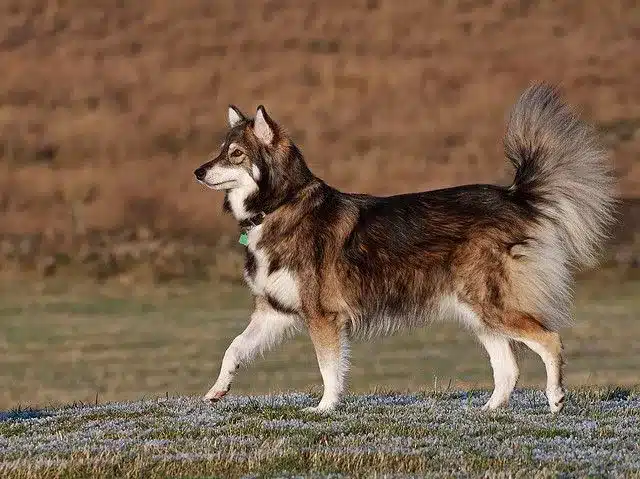
Origin: United Kingdom | Weight: 55-110 lbs | Energy: High.
Mix of Siberian Husky, Alaskan Malamute, and German Shepherd. Created specifically for wolf-like appearance with domestic temperament. Friendly, outgoing personality unusual in wolf-like breeds. Good family dogs but still need substantial exercise and training.
10. American Alsatian
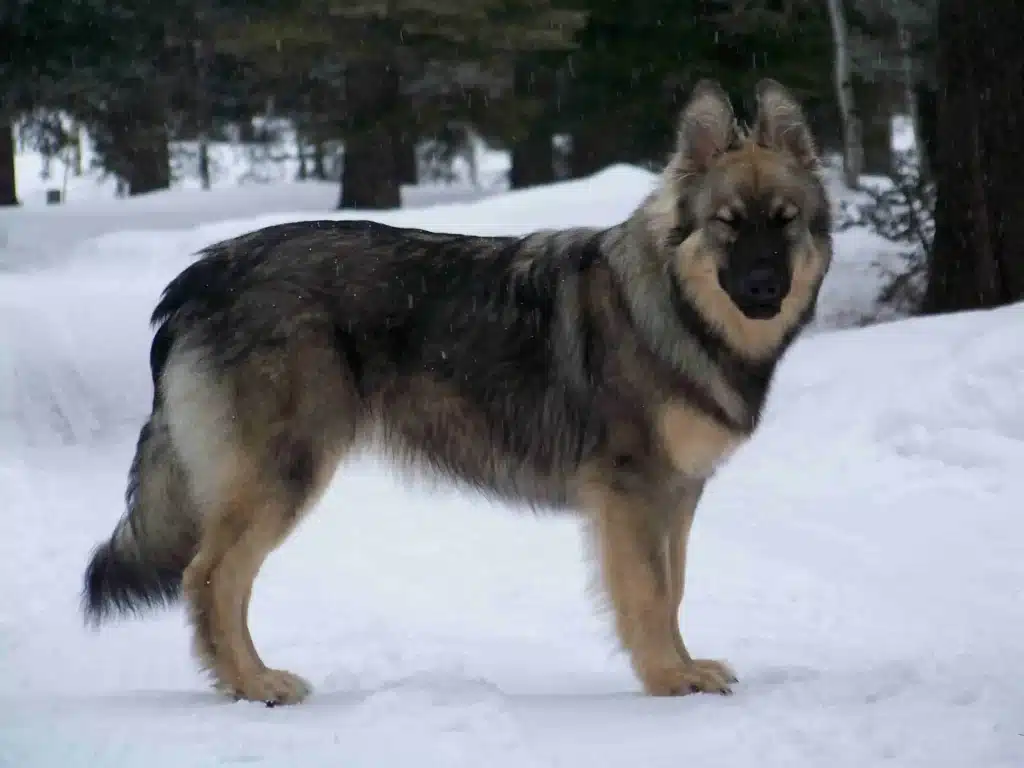
Origin: United States | Weight: 75-120 lbs | Energy: Moderate.
Bred specifically as a companion breed with wolf-like appearance. Calmer temperament than most on this list. Large size with thick coat and wolf coloring. Designed for families wanting the look without extreme exercise needs. Still relatively rare.
11. Greenland Dog
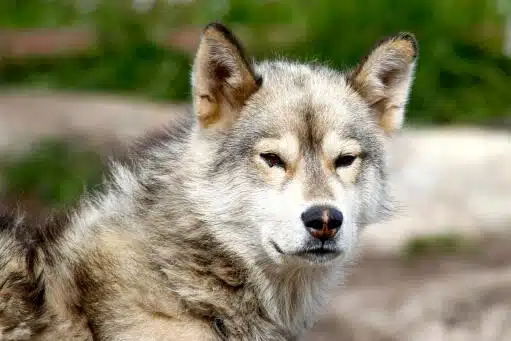
Origin: Greenland | Weight: 66-70 lbs | Energy: Very High.
Ancient Arctic breed used for sledding and hunting. Compact, powerful build with wolf-like features. Extremely hardy and independent. Strong prey drive and pack mentality. Requires cold climate or excellent air conditioning. Not suitable for warm climates.
12. Swedish Vallhund
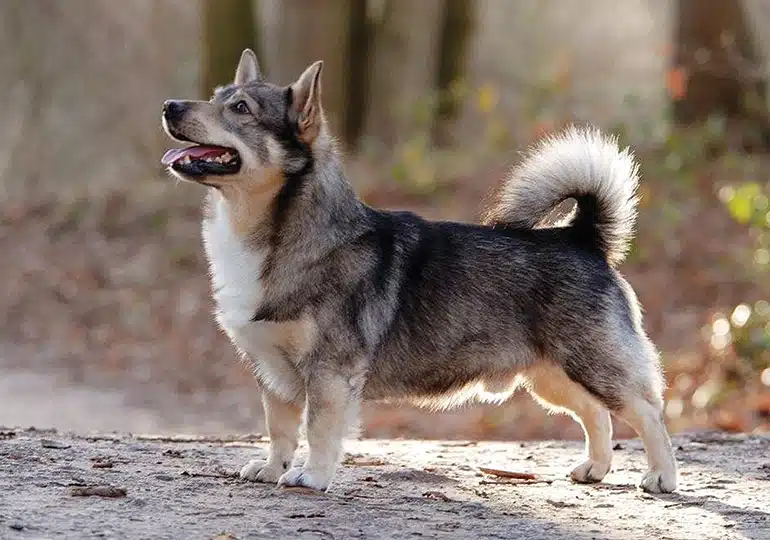
Origin: Sweden | Weight: 20-35 lbs | Energy: High.
The “wolf corgi” with spitz-type features creating visual wolf resemblance rather than true wolf-type breeding. Short legs but distinctly pointed ears and coat pattern reminiscent of wolf coloring. Originally used for herding cattle. Compact size makes them more manageable than larger wolf-like breeds. Good for those wanting wolf-inspired looks in smaller package.
Anatomy of Wolf-Like Features
Wolf-like dogs share several key physical traits with their wild cousins. Understanding these features helps explain both their appeal and their care requirements.
Facial Structure: Most wolf-like breeds have elongated muzzles, almond-shaped eyes, and erect triangular ears. This gives them that alert, intelligent expression we associate with wild wolves. According to the American Kennel Club, these features indicate breeds developed for working in harsh environments where acute senses were survival necessities.
Body Build: These dogs typically have lean, athletic frames built for endurance. Their deep chests and strong hindquarters reflect their working heritage. Many were bred for sledding, herding, or guarding in harsh climates.
Coat Characteristics: Double coats are common, with a dense undercoat for insulation and longer guard hairs for weather protection. This means serious shedding seasons and specialized [Add internal link to CanineScape grooming guide for double-coated breeds].
Behavioral Traits: Wolf-like breeds often retain pack mentality, high prey drive, and strong territorial instincts. They’re typically more independent than typical companion breeds, sometimes described as “cat-like” in their decision-making.
Product Recommendations
Furminator Undercoat Deshedding Tool
Perfect for double-coated wolf-like breeds during shedding season. This tool reaches through the topcoat to remove loose undercoat without cutting or damaging the guard hairs. The stainless steel edge is designed to grab and remove loose hair effectively.
Works exceptionally well on Huskies, Malamutes, and German Shepherds during their twice-yearly coat blows. The ergonomic handle makes grooming sessions comfortable for both you and your dog.
The main limitation is that it’s not suitable for daily use – overuse can irritate the skin. Save it for heavy shedding periods.
KONG Classic Dog Toy
Wolf-like breeds need serious mental stimulation, and this virtually indestructible toy delivers. Fill it with treats, peanut butter, or frozen foods to create a puzzle that keeps intelligent dogs occupied for hours.
Ideal for Czechoslovakian Vlčáks, Tamaskans, and other high-energy breeds that can become destructive when bored. The natural rubber bounces unpredictably, triggering prey drive and encouraging solo play.
One drawback: some determined chewers can eventually wear down the material, so inspect regularly for damage.
Ruffwear Front Range Harness
Many wolf-like breeds are strong pullers with high prey drive, making collar walking dangerous. This front-clip harness distributes pressure across the chest and gives you better control without choking.
Particularly effective for Alaskan Malamutes and other powerful breeds. The padded chest panel prevents chafing during long hikes, and the aluminum V-ring is incredibly durable.
The limitation is that some dogs can still pull through it if not properly trained. Check our complete guide for leash training.
Nina Ottosson Puzzle Feeder
Wolf-like breeds are problem solvers who thrive on mental challenges. This interactive puzzle feeder turns mealtime into a brain game, slowing down fast eaters while providing cognitive stimulation.
Great for breeds like German Shepherds and other intelligent breeds that can become anxious or destructive without sufficient mental exercise. The adjustable difficulty keeps dogs engaged as they learn.
The main drawback is that it requires supervision initially – some dogs try to chew the plastic pieces instead of solving the puzzle.
Step-by-Step Guide to Choosing Your Wolf-Like Dog
1. Assess Your Experience Level Start with honest self-evaluation. Have you successfully trained large, independent dogs before? Wolf-like breeds aren’t ideal for first-time owners. They require confident leadership and consistent boundaries.
2. Calculate Exercise Commitment Plan for 2+ hours of daily activity, not just walks. These dogs need running, hiking, or sledding-type exercise. Learn more about [Add internal link to CanineScape high-energy dog exercise guide].
3. Research Local Breed-Specific Legislation Some areas restrict or ban wolf-hybrid breeds. Check local laws before falling in love with a particular breed. This prevents heartbreak later.
4. Find Responsible Breeders Avoid puppy mills and backyard breeders. Look for health testing, proper socialization, and lifetime support. Good breeders screen buyers carefully and often have waiting lists.
5. Prepare Your Home Install 6-foot minimum fencing with buried barriers to prevent digging escapes. Remove or secure anything that could trigger prey drive, like small pets or children’s toys.
6. Plan Socialization Strategy Start socialization immediately and continue throughout puppyhood. Wolf-like breeds can become fearful or aggressive without proper exposure to people, animals, and situations.
7. Establish Training Routine Begin basic obedience immediately using positive reinforcement. These intelligent breeds learn quickly but can become stubborn if training isn’t engaging and consistent. Master [Add internal link to CanineScape recall training guide] early.
Breed Comparison: Energy Levels and Care Needs
Very High Energy Breeds (2-3+ hours daily exercise):
- Siberian Husky – Built for endurance running, thrives with sledding sports
- Alaskan Malamute – Powerful sled dog requiring heavy work
- Czechoslovakian Vlčák – Military working breed needing intense activity
- Tamaskan – Athletic breed requiring substantial daily exercise
- Saarloos Wolfdog – Needs extensive physical and mental stimulation
- Greenland Dog – Arctic working breed with extreme energy needs
High Energy Breeds (2 hours daily exercise):
- German Shepherd – Versatile working dog, adaptable activities
- Northern Inuit Dog – Athletic breed needing regular intensive exercise
- Utonagan – Active breed requiring consistent daily activity
- Swedish Vallhund – Small but energetic, needs mental stimulation
Moderate-High Energy (1.5-2 hours daily exercise):
- Shiloh Shepherd – Calmer than standard German Shepherds
- American Alsatian – Bred specifically for lower exercise needs
Sizing Guide for Wolf-Like Breeds
Extra Large (80+ lbs): Alaskan Malamutes, large German Shepherds, Shiloh Shepherds, Northern Inuit Dogs (large), American Alsatians, Saarloos Wolfdogs. Need extra-large equipment, significant food budgets, and sturdy furniture.
Large (60-80 lbs): Standard German Shepherds, Czechoslovakian Vlčáks, Tamaskans, Greenland Dogs. Most popular size range with standard large-breed equipment compatibility.
Medium-Large (45-60 lbs): Female Siberian Huskies, smaller Northern Inuit Dogs, medium Utonagans. Bridge size requiring careful equipment selection.
Medium (35-45 lbs): Small Siberian Huskies only. More manageable size but retain full exercise requirements.
Small-Medium (20-35 lbs): Swedish Vallhunds only. Unique small wolf-like option with lower space requirements.
Common Mistakes (and Fixes)
Underestimating exercise needs. Many owners think daily walks suffice for wolf-like breeds. The fix: Plan for running, hiking, or dog sports. Mental exhaustion through training counts significantly too.
Inadequate fencing. Standard 4-foot fencing won’t contain most wolf-like breeds, especially Huskies and Malamutes. The fix: Install 6-foot fencing with dig guards or underground electric barriers.
Inconsistent training. These intelligent dogs exploit inconsistency quickly, becoming stubborn or dominant. The fix: Establish clear rules and ensure all family members enforce them identically.
Poor socialization timing. Waiting until puppies are fully vaccinated often means missing critical socialization windows. The fix: Start controlled socialization immediately with healthy, vaccinated dogs in safe environments.
Treating them like typical pet dogs. Wolf-like breeds have unique instincts and needs different from Labs or Golden Retrievers. The fix: Research breed-specific requirements and adjust expectations accordingly.
Ignoring grooming needs. Double coats require specific care, especially during seasonal shedding. The fix: Invest in proper grooming tools and establish regular brushing routines.
Buying from questionable sources. Puppy mills and backyard breeders often produce dogs with serious behavioral and health issues. The fix: Research breeders thoroughly, visit facilities, and be willing to wait for quality puppies.
Troubleshooting Common Issues
If your dog exhibits excessive howling: Increase exercise and mental stimulation first. Add puzzle toys, training sessions, and consider if neighbors complain about separation anxiety.
If your dog is destructive when alone: Crate train gradually and ensure adequate pre-departure exercise. Consider doggy daycare for extremely high-energy breeds like Huskies.
If your dog shows aggression toward strangers: Consult a professional trainer immediately. Don’t attempt to fix aggression issues without expert guidance, especially with large, powerful breeds.
If your dog escapes frequently: Check fencing for gaps, add dig barriers beneath gates, and ensure adequate mental enrichment at home. Boredom drives most escape attempts.
If your dog won’t come when called: Practice recall training in secure areas first using high-value treats. Never call your dog for something unpleasant like ending playtime.
If your dog resource guards: Don’t attempt to take items away forcefully. Trade for high-value treats and work with a professional trainer before the behavior escalates.
When to See a Professional
Contact a veterinary behaviorist if your wolf-like dog shows aggression toward family members, other pets, or strangers. Early intervention prevents escalation and potential liability issues that can occur with large, powerful dogs.
Seek professional training help for persistent pulling, jumping, or destructive behaviors. These breeds are strong enough to cause injury and smart enough to outwit inexperienced trainers.
Consider professional consultation if your dog exhibits extreme fear or anxiety. Some wolf-like breeds are naturally cautious, but excessive fearfulness indicates serious socialization gaps or potential genetic issues.
Red flags requiring immediate professional help include resource guarding escalation, any bite incidents, or prey drive directing toward small children or pets.
Legal Note: True wolf-dog hybrids face different legal restrictions than the domestic breeds listed here. Many states prohibit or heavily regulate ownership of actual wolf hybrids. Always verify local and state laws before acquiring any wolf-like breed, and ensure you’re working with reputable breeders of domestic dog breeds rather than hybrid producers.
Frequently Asked Questions
Are wolf-like dogs actually part wolf? Most are not. Breeds like Huskies and German Shepherds achieved their wolf-like appearance through selective breeding, not wolf hybridization. Only Czechoslovakian Vlčáks and Saarloos Wolfdogs have recent wolf ancestry from controlled breeding programs.
Do these dogs make good family pets? With proper training and socialization, many do excellently with families. However, they need experienced owners who understand their high exercise needs, independent nature, and potential for strong prey drive around small animals.
How much do wolf-like dogs shed? Expect significant shedding, especially twice yearly during seasonal coat changes. Daily brushing helps manage loose hair, but you’ll still find fur throughout your home. Professional grooming during shedding seasons is worthwhile.
Are they good with children? Properly socialized wolf-like breeds can be excellent with children. However, their size and energy levels require supervision during play. They may accidentally knock over small children or play too roughly without proper training.
Do they require special diets? Most thrive on high-quality commercial foods appropriate for large, active breeds. Some benefit from higher protein content due to their working heritage, but consult your veterinarian before making significant dietary changes.
How long do wolf-like breeds typically live? Most live 10-14 years, similar to other large breeds. German Shepherds may have shorter lifespans due to hip dysplasia risks, while Arctic breeds like Huskies often live longer with proper care.
Can they live in apartments? Generally not recommended for most wolf-like breeds. They need substantial space and exercise that’s difficult to provide in apartment settings. Even with adequate daily exercise, confined living can lead to destructive behaviors and stress.
Conclusion
Dogs that look like wolves offer the perfect blend of wild beauty and domestic loyalty for experienced, dedicated owners. Whether you’re drawn to the endurance of a Siberian Husky, the power of an Alaskan Malamute, or the rare elegance of a Tamaskan, these twelve breeds can become extraordinary companions with proper preparation.
Success with wolf-like dogs requires honest assessment of your capabilities and long-term commitment. They need more exercise, training, and mental stimulation than typical companion breeds. Shelters and breed rescue organizations report that working and northern breeds are frequently surrendered due to underestimated care requirements and behavioral challenges.
The reward for meeting their needs is a bond unlike any other domestic dog relationship. These breeds offer intelligence, loyalty, and a connection to something ancient and wild. They excel in dog sports, outdoor adventures, and as devoted family guardians when properly trained and socialized.
Before bringing one home, connect with breed-specific rescue organizations to meet adult dogs and understand real-world care requirements. Research reputable breeders who health test and provide lifetime support. Most importantly, prepare for a 10-14 year commitment to daily exercise, consistent training, and specialized grooming needs.
Your adventure with these magnificent, wolf-like companions begins with education and preparation. Take the time to choose the right breed for your lifestyle, and you’ll gain a remarkable partner for life’s greatest adventures.
